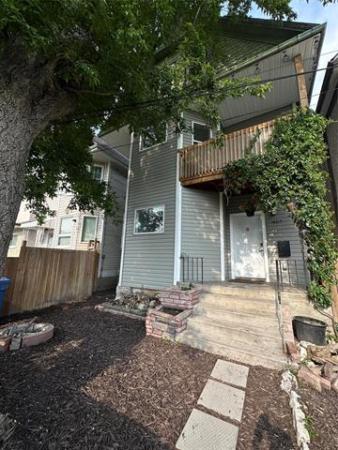QUESTION: Fifteen years ago we added a bedroom and family room to our 540-square-foot home. The addition is set on piles. The crawl space was insulated with Styrofoam and poly and the floor was covered with poly and sand. All of my downspouts have extenders. The only access to the crawl space is through two old basement window openings to facilitate air movement.
Over time we have noticed dampness and a musty smell emanating from the crawl space. Last winter we closed over the window openings and diverted a heat duct into the area from the furnace that has the fan running continuously. The thinking was this would dry out the sand base and eliminate any mustiness, but it still prevails.
Should we be installing venting in the outer walls for summer airing and continue with the heating in winter? I assume any venting would have to be closed off to eliminate cold air over the winter. -- Jim Rodgers
ANSWER: Damp-smelling crawl spaces are one of the most common issues homeowners face, no matter what age or location of the home. This can range from standing water to simple odours similar to what you are experiencing. Measures to prevent this from occurring range from major excavation to proper ventilation, but your situation seems to be more related to the latter.
No matter how well built or sealed a crawl space is, moisture intrusion is always a possibility. You have already addressed several of the most common causes of the dampness, but that may not be a complete remedy. The reason that many crawl spaces have moisture issues is simply the design. These areas are typically constructed with a short perimeter concrete grade beam that is the only barrier to moisture from the surrounding soil entering the crawl space below grade. As in your case, this grade beam is supported by deep concrete piers that will resist vertical movement, but they provide little additional protection from the moisture in the surrounding soil.
Due to normal erosion and soil wetting and drying, water may be able to seep underneath the grade beam and enter the crawl space. The polyethylene air/vapour barrier you have installed may prevent most of this moisture from entering the living space of your home, but it is never perfect. Also, it can trap moisture in the soil, allowing it to remain damp, which may be the major source of the smells you are experiencing.
While you have taken measures to minimize moisture intrusion by good grading and water management on the exterior of your home, and have added heat from your forced air furnace, you may be missing one important component from the crawl space. A sump pit and pump, possibly connected to a perimeter drainage system, is an important part of most dry crawl spaces. This pit should be located near the centre of the crawl space, preferably at a low point in the sloping soil. This will collect excess moisture in the soil and the pump will discharge it to the exterior. If you don't have a properly installed sump pit and pump in an addition of your age, one should be relatively easy to install. Even without a perimeter drainage system, this may help to collect enough excess moisture to prevent the damp-smell in your crawl space.
To more directly answer your question, adding summer vents in the perimeter grade beam is a very good idea. The warm, fresh air that will enter the crawl space through these vents will help eliminate the moisture and the offensive odour. These vents may be difficult to install, requiring cutting or drilling through the concrete grade beam, but may be well worth the effort and cost. You should ensure that you have at least one vent on opposite sides of the foundation to allow a good cross draft to develop. Also, these vents must be screened to prevent inspects and other pests from entering the crawl space. Finally, winter covers will be critical, but these may be insulated with rigid foam, similar to the other insulation already in place.
The last issue to address is the heating and ventilation of the crawl space in the heating season. You have taken exactly the right steps by installing a warm-air duct from the furnace and running the fan continuously, but you have erred by closing the access hatches. The two openings into your basement are the only means of ventilation of the damp crawl space in the winter, so they should remain open. Pumping warm air into this area will help dry out the moisture by simple circulation, but much of this damp air may remain trapped without any means to escape. Closing these access hatches may prevent the musty smell from entering the basement, but will only make this issue worse when they are opened.
To sum up this discussion, moisture prevention for crawl spaces has two main areas to address. Firstly, prevention of water entering this area by good exterior grading and water management is very important. Secondly, when water does penetrate this area, despite your best attempts to minimize it, it must be eliminated. This can best be achieved by a combination of a properly installed and maintained sump pit and pump and good ventilation.
If all of these components are in place, the moisture, along with the offensive smell, should disappear.
Ari Marantz is the owner of Trained Eye Home Inspection Ltd. and president of the Canadian Association of Home & Property Inspectors -- Manitoba (www.cahpi.mb.ca). Questions can be emailed to the address below. Ari can be reached at (204) 291-5358 or check out his website at www.trainedeye.ca.
trainedeye@iname.com



